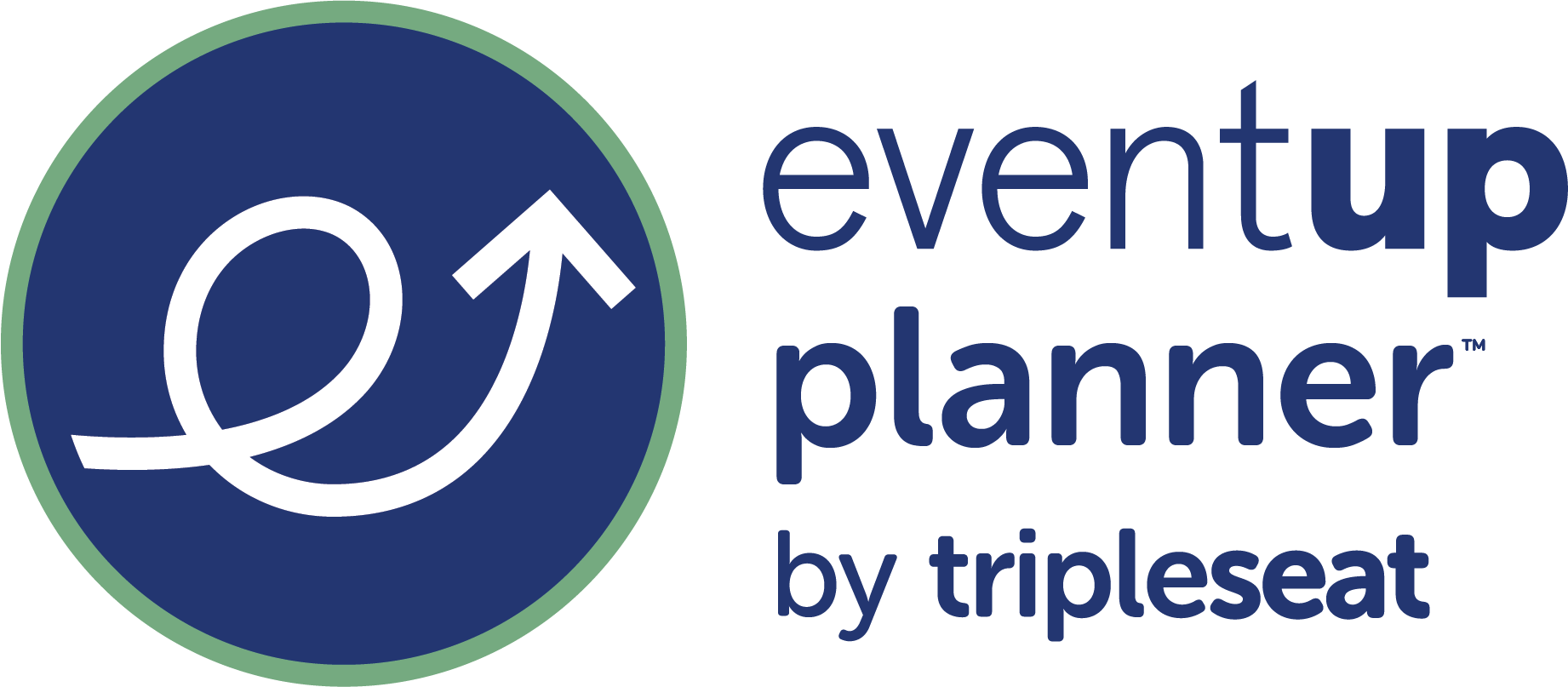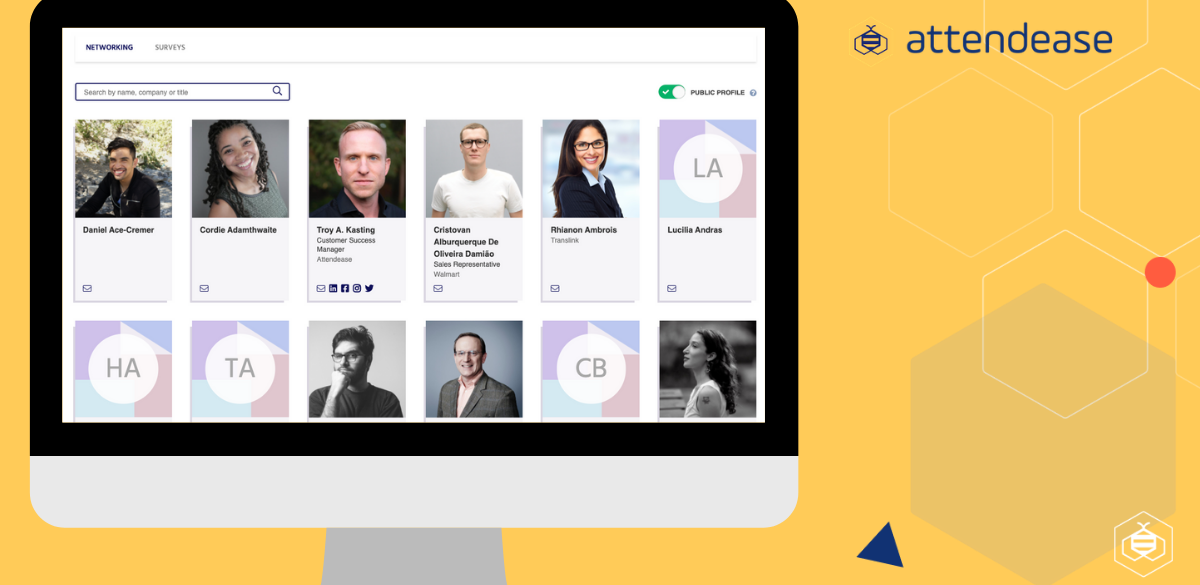2020 challenged us all and it’s not surprising that event planners took one of the hardest hits. If you were fortunate enough to survive company layoffs, you likely faced one of the biggest tests of your career as you navigated complete uncertainty around your work. It was time to say goodbye to the way you’d always done things, work within difficult restrictions and safety protocols. Let’s step into completely new territory to keep your meetings and events alive with some corporate meeting management software advice.
The solution to transition to virtual events brought along many more challenges of its own. From keeping audiences engaged in a virtual environment, to a lack of tech knowledge, running into issues securing sponsors, and networking limitations between attendees. This all took plenty of trial, error, and learning through experience. Over a year since the onset of the pandemic, many professionals have started to embrace this shakeup to the industry. They realize major benefits like cost savings and increased reach when hosting virtual meetings and events.
In a recent interview with Attendease, event expert Tahira Endean shared the example of how IBM set a new record for attendance at one of its major corporate events in 2020. Its IBM Think conference attracted over 100,000 attendees as opposed to a typical 30,000 attendees for its in-person event.
With COVID-19 vaccinations rolling out, things are looking up. The return to hosting safe in-person events is right on the horizon. In an effort to hold on to the scale advantages of running virtual events while keeping in-person meetings safe, the industry is gearing up to make yet another pivot to hybrid formats — meetings and events that feature both virtual and in-person components. A State of the Event Industry Survey for the first quarter of 2021 found that a good 68% of respondents expect their events to be hybrid events once they go back to business.
Finding the best event management software for your objectives
This next transition comes with even more obstacles that can be overcome with the right tools and technology. It’s now on event professionals to source event management software that’s capable of delivering the intended experiences, for both in-person and online audiences.
There are many moving pieces to the puzzle. If you’re a corporate event planner managing a large portfolio of meetings and events, picking the right vendor can be challenging. It can be tough to find suitable event management software that can seamlessly meet the vastly different objectives of your individual events. Be they regional meetings, product launches, lunch and learns, or town halls – to name just a few.
The problem is that the market is inundated with event tech solutions. This leaves you overwhelmed by the sheer amount of options available. Many of these platforms claim to be “all-in-one” solutions, but we advise you to evaluate these claims with some skepticism.
“There’s not one ring to rule them all,” said Lindsay Martin-Bilbrey, CMP of CEO Nifty Method in a webinar hosted by Smart Meetings, “A hybrid event is going to have lots of things that are plugging into it, you have maybe your broadcast tech, AV tech, community tech… It can be one platform that does maybe 60-70%. But the ones that are out there advocating that they do it all and they do it all very well are lying to you.”
Rather than seeking the mythical all-in-one solution only to make costly mistakes and run into limitations further down the line, the way to go instead is to choose foundational event management software that can cover 60-70% of the needs of your event portfolio. You can then seek out additional event management tools that complement it. You can use these dedicated tools to cover more specific aspects of your event like networking and audience response.
And to future-proof your events, it’s crucial that you take a few steps back to evaluate your event goals. You should also evaluate the experience you’re looking to deliver to your guests before committing to event management software. In other words, you need to think from a design-first perspective.
Why event design needs to come before event management software
Going in on event management software blindly is risky business. Without getting a full understanding of the functionalities you need to support your portfolio of corporate meetings and events.
Whether you’re planning a product launch for 400 people or hosting an onboarding meeting for a cohort of 10 new employees, any event or meeting needs to be planned with three key elements in mind:
- The audience – who’s coming
- The event objectives – what the goal is
- The experience you’re trying to create to support both these things
Before shortlisting options for your event management software, review the following questions and ideas for each event in your portfolio.
1. Who’s your audience?
A meeting or event can be largely unproductive if the setup and/or the technology doesn’t connect with your audience. For every event you’re planning to host, consider your audience type. That is whether your audience is made up of company executives, senior leadership, new clients, new employees, the general public, or a combination of these groups. Ask yourself:
- What are they looking to get out of your event?
(e.g knowledge transfer, access to networking opportunities with thought leaders, inspiration, etc) - How tech-savvy are they? Do they use the technology integrated into your event regularly themselves or will they need some coaching?
- Will they require lots of stimulation and interactivity?
- How important are networking and open dialogue to them?
The more you’re able to put yourself in the shoes of your audience, the better you’ll be able to fit. You could design your meeting or event to cater to their needs with the technology that makes the most sense.
If you’re managing events for both internal and external audiences, you might run into issues. You’ll need to promote the public events on your website, but share your internal events exclusively with employees. This calls for a tool that’s able to use a combination of public-facing website, intranet, and emails to manage your events portfolio.
It’s important to note that although you might have one audience, (let’s say your demographic is young working professionals in the tech industry), it may actually split into different attendee personas. You’ll find that you’ll have a mix of social butterfly attendees as well as dedicated learners. It’s wise to make use of these personas as a tool for further customizing your event experience. Especially to the unique goals and needs of each persona. Designing your experience for different attendee types is something that can be done at every stage of the attendee journey.
2. What’s the event goal?
Your event goals will be drastically different if you’re planning a product launch, training event, or seminar, to name a few. You might be looking to improve bonds with clients, connect with new prospects, or strengthen your corporate culture.
Regardless of what type of event you’re planning, take some time to ask your team:
- Why is this event being organized?
For a recruitment event, for example, the goal will be to recruit top talent to your team. - What do we want attendees to take away from the event? You’d likely want attendees to walk away with better knowledge about what your company does, and what job opportunities are available to them.
- What do we, as a business, want to get out of this event? You’d want brand exposure and the opportunity to connect with job seekers.
- How will we know if the event is successful? What are our measures of success? You’d likely want to track attendance, engagement on social media, inclusion of the event in media stories, an increase in job applications, or successful hires made through the event.
Consider how you can accomplish the goals at hand through the use of event management software. Would you need a platform to enable individual virtual connections, larger breakout rooms, or sponsor halls? Will attendees be free to network openly, or will they need to be grouped into smaller groups? These are all things to consider when you visualize how you need your technology to run.
3. What event experience are you looking to create?
The events industry is essentially the experience industry. Hosting an event is far more than inviting guests to a time and place, but is about what they experience.
The type of experience your attendees have starts right from when they discover your event, to how they register. It also includes what happens when they attend your event (both online and off), and even the after-event experience.
It’s smart to get very intentional when deciding what experience you want to take your attendees through at every stages.
- What aesthetic do you want to give to your event website?
- How will you provide the context for them to build meaningful connections?
- What event aspects can you include to facilitate knowledge transfer between attendees or attendees and speakers?
- What can you do to help attendees to break the digital fatigue of staring at a screen to create a more interactive experience?
- How immersive of an experience do you want to create for your online and in-person audiences? What can you do to engage their five senses?
- Are there any entertainment components to your event that you hope to include, like a comedy skit, band performance, or having your attendees play games?
Evaluating the experience you want to deliver to your guests will already start to tell you if you’ll have a need for seamless online check-in, features like live polling, gamification tools, email communication, surveys, or speaker slides.
By clarifying your audience, your event goals, the experience you intend to create by going through the steps above, you’ll start to recognize what features of event management tools are going to be your must-haves, and what offerings are going to be your secondary “nice to haves”.
5 factors to consider when evaluating meeting management tools
Take a look at the best event management software on the market. You’ll find that they’re stacked with features that cover every step of the event planning process. Some common functions you’ll find in event management software include event registration, agenda management, event ticketing options, attendee management, website CMS, payment processing, lead retrieval, and the list goes on.
Before getting into the nitty-gritty top features looking for the right software, consider which criteria your solution should meet:
1. Branding
Whether you’re hosting internal or external corporate events, you’ll want to keep control over the look of your brand. Many event planning tools will offer a list of pre-built website and email templates you can use for event communication. But you’ll want to be sure they’re customizable enough to create completely on-brand designs.
Can the designs look like they’re coming directly from your company (white-labeled)? Or does the tool pose template limitations or watermarks that hinder the look of your brand?
When evaluating a potential vendor, check to see if the tool offers custom URLs, and customization options. Such as the ability to add your logo, colour pallets, and fonts to make your event website your own.
2. Versatility
Will the event management software you’re looking at be able to support your in-person events as well as your specific needs for virtual and hybrid meetings and events? Can the platform handle the complexities of your events portfolio to provide a cohesive experience to your attendees?
You’ll need to consider whether an event planning tool can support both paid and free events, public-facing as well as private events and whether it can handle all event formats (in-person events, hybrid events, and virtual events). You’ll find that you need one that can handle event registration and delivery for both in-person and virtual audiences.
3. Scalability
If you have a large portfolio of corporate events to support, how well does the platform support multi-event management? Is it easy enough to add new events to your mix without too much time spent building out your events? Or will this require regular effort and constant input from your team?
Event software solutions stand out when they help you save time on manual processes. Check if you can copy over attendee lists, event website designs, and email messages from one top event to another. This help you to avoid wasting time every time you create a new event or meeting.
4. Ease of use
Consider who the primary and secondary platform users are going to be on your team, both internally and externally. Is the software user-friendly with a digestible user interface and helpful prompts? Or will you need to factor in time to train new users on how to use the event management platform?
If you collaborate with other departments, organizers, or external parties, is it simple enough to assign or limit user permissions?
Ideally, you want to go with an intuitive event management tool that’s user friendly enough. For all those involved in your event management process.
5. Integrations
No one wants a standalone solution. There’s no point securing event planning software if it doesn’t play nicely with other tools you regularly use. As you scan the market for an event management platform, you’ll want to check its list of integrations. To check what tools it will easily connect to, and what might be a problem if it is not available.
Popular event management software offer integrations to platforms like:
- Hubspot – so you can set up the flow of attendee information to your corresponding Hubspot contacts
- Salesforce – to manage attendee data from one unique platform
- Marketo – to manage and segment lists for more powerful marketing campaigns
- Slack – to get real-time team notifications of activity from your event platform
- Google Analytics – to track online traffic to your event site
Building your unique tech stack of corporate meeting management softwares
There is no all-in-one solution that can meet the complete requirements of each unique event in your corporate event portfolio. You’ll need to decide which event management software to rely on for your fundamentals. Then you decide which additional tools you can add to your event technology stack to cover more specific needs.
This can mean sourcing award-winning event management software that covers most of your fundamental event management needs. Then build an external tech stack that can help you manage additional functions before, during, and after the event. Such as attendee engagement, gamification, or broadcasting.
For example, you might use a platform like Attendease to set up your event website, send your marketing emails, manage event registration, roll out your surveys, process your payments, and track the performance of your events and meetings through real-time ticket sales.
But while that covers the skeleton of what you need to create your event, you might still choose to integrate the platform with other niche audience response software, conference intelligence software, or lead retrieval software.
Here are some examples of live streaming, audience response, and gamification tools you can consider to get the most out of your event:
- Slido – for live event polling
- Kahoot – for delivering engaging learning experiences
- Quizziz – to deliver competitive quizzes and interactive presentations
- Crowdpurr – for live trivia
- Livestream – for streaming your event
Final words
The state of the events industry is changing as we’ve begun to welcome back in-person events. Virtual events are here to stay and hybrid events are only projected to grow in popularity moving forward. To keep up with the new demands, event planners will need the help of tools and technology that will help them manage all three of these different formats to future-proof their events.
Before committing to a corporate meeting management software, it’s worthwhile to revisit your event design for your diverse portfolio events to evaluate your event goals, the experience you intend to deliver, and your audience’s unique needs. Choosing the right corporate event management software should be the subsequent step.
All-in-one solutions that claim to do it all come with hidden costs and can cause a number of issues when they fail to meet the specific needs of each of your events. What will serve you well is deciding on a foundational tool that can give you the versatility and scalability you need to manage the intricacies of each unique event, and then plugging in specialized software that can deliver the additional capabilities you need to deliver truly memorable event experiences, whether your guests are joining you in-person, from the comfort of their homes, or both.






